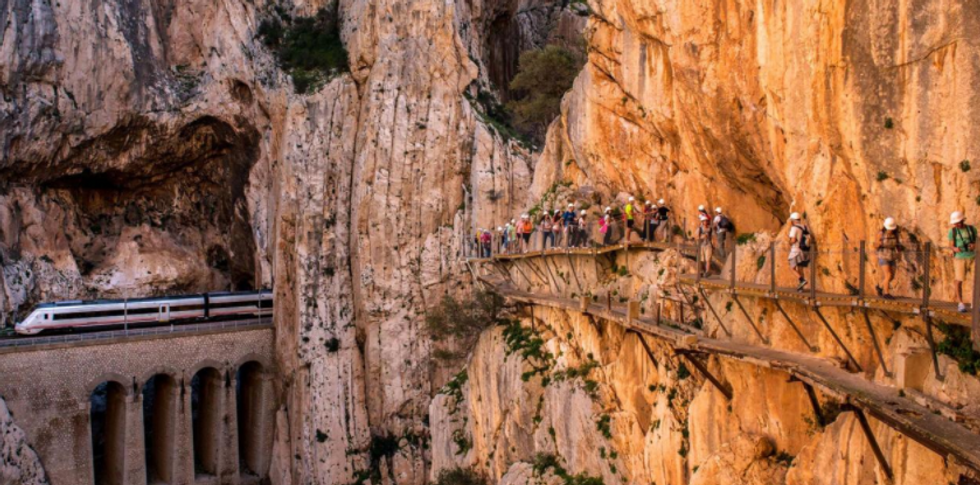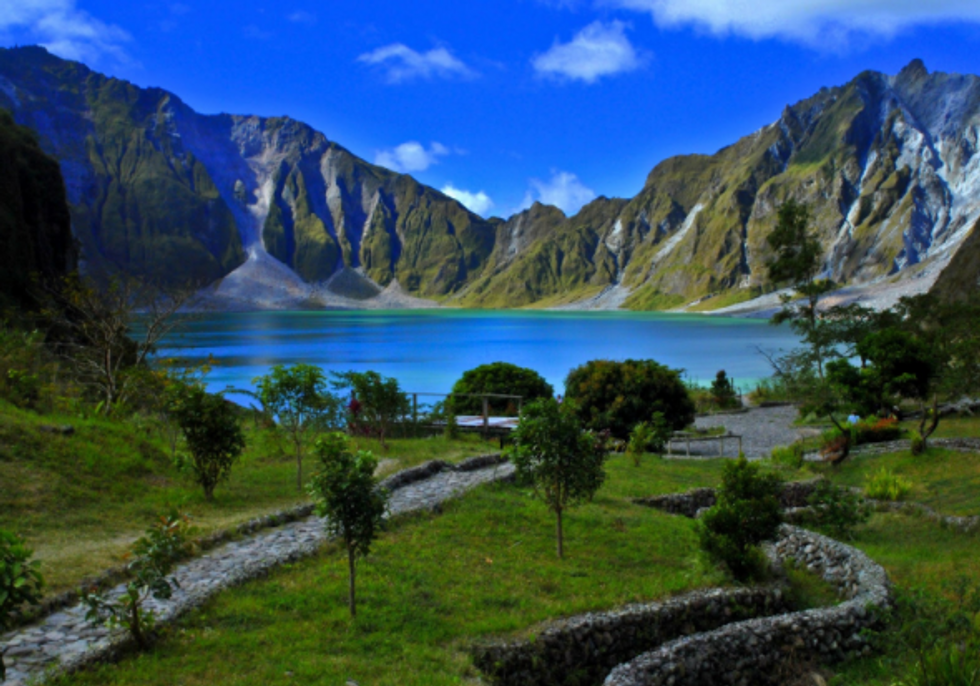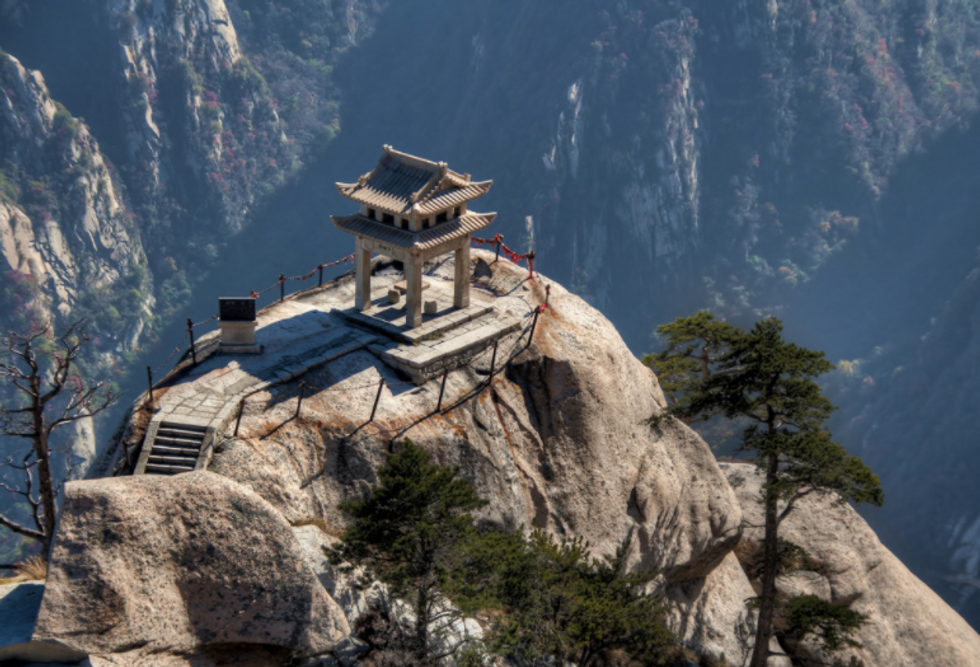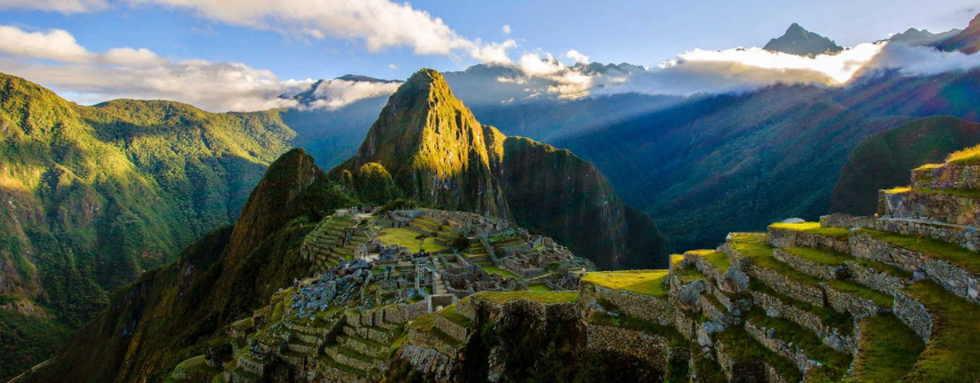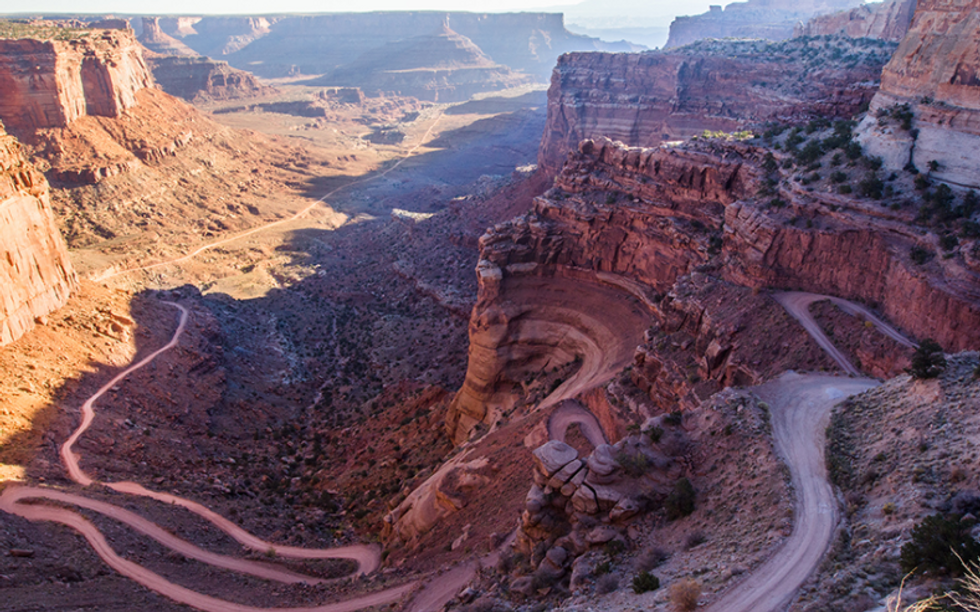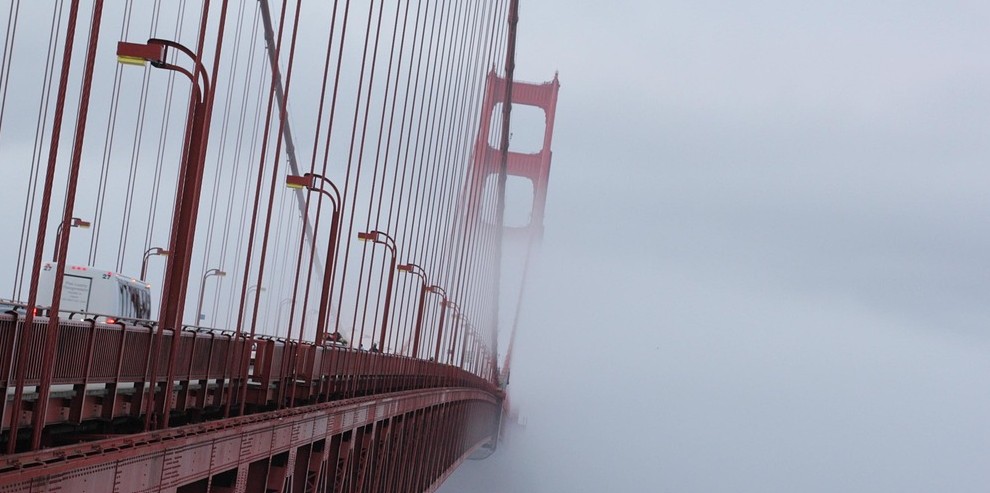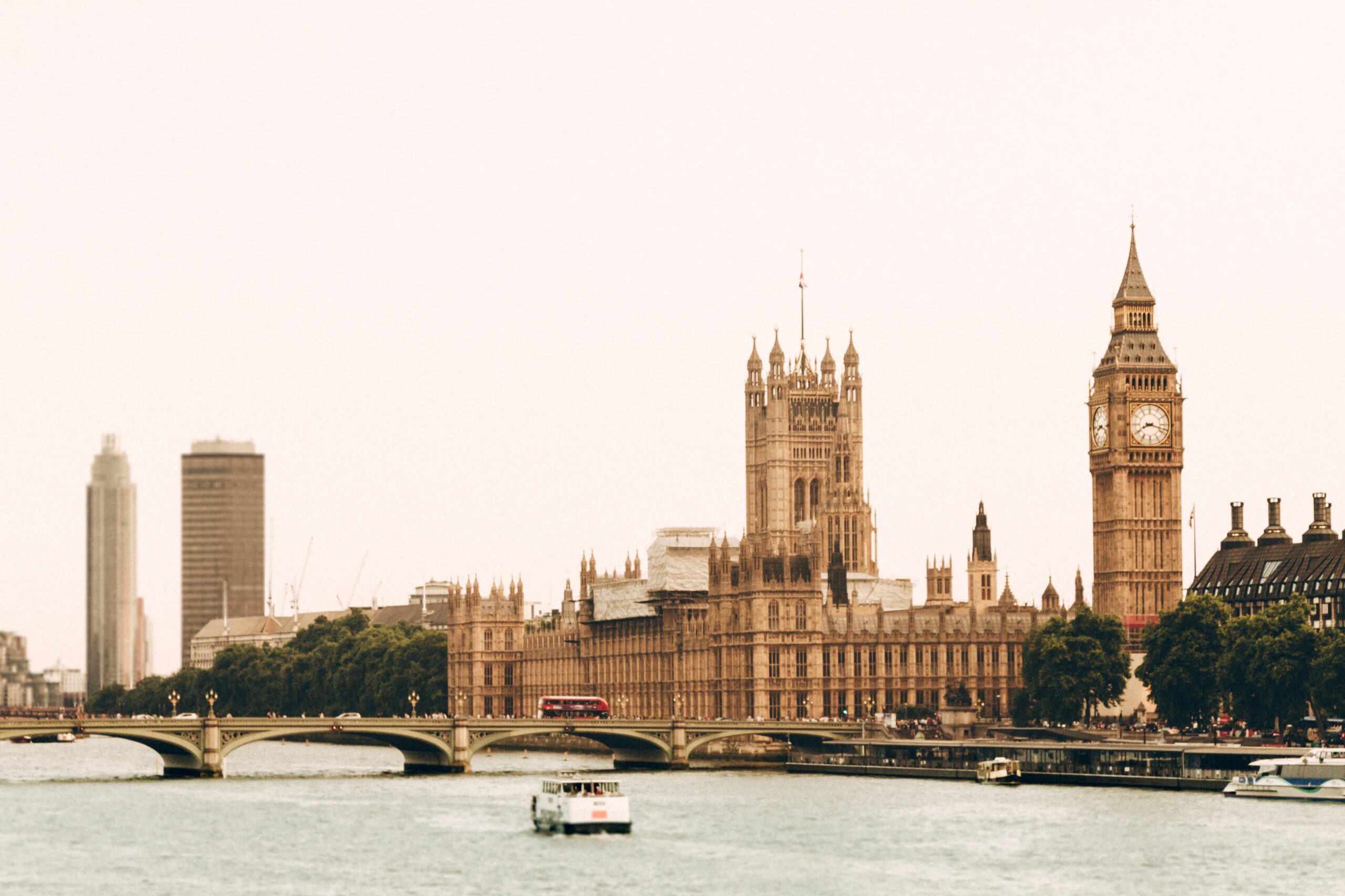
Adventure-Ready: Around the World in 5 Daredevil Hikes


Those who think hiking is just walking should take a look at these hikes. With trails that stretch over Indiana Jones-worthy canyons and hug steep cliff-sides, daredevils will approve of the surge of adrenaline these “walks” offer.
El Caminito del Rey, Spain
Known as Spain’s most dangerous path, the King’s Pathway was constructed in the early 20th century as a hydroelectric workers’ cliffside path through the narrow El Chorro gorge. This trail became a destination for thrillseekers unintimidated by the hike’s state of disrepair, but was closed to the public from 2001 until 2015 after five tourists fell from the walkway to their deaths over a two-year period.
“My fingers grip white-knuckled to the rail and my guts churn over themselves in waves,” Andy Jones wrote of the walk for London’s The Independent. And that’s with the additional safety features on the now-reopened path. Suffice it to say, the three-to-four-hour trek still offers a heartstopping experience along the three-foot-wide, nearly five-mile-long wooden footpath.
Feeling more like an armchair hiker today? Google Maps has an interactive virtual walk just for you.
Mount Pinatubo, Philippine
If you like a Russian Roulette type flair to your hikes, you’ll love Mount Pinatubo. After a 400-year period of dormancy, the volcano blew in 1991, becoming the second-largest volcanic eruption of the 20th century—ten times larger than the blast of Mount St. Helens in 1980. More than eight hundred people died. It erupted again in 1992, killing 72 people.
The three-hour hike to Mount Pinatubo’s crater lake is a relatively easy one; it’s the question of when the volcano will next erupt that adds an element of danger. If you swim in the crater lake, be aware of strong currents at its center.
Mount Hua, China
A spiritual ascent that has been home to hermits and seekers since the 2nd century BCE, many hikers have met their maker on this dangerous hike in Northwest China’s Shaanxi province. Mount Hua has five peaks which form the shape of a lotus flower, the bloom of wisdom and Buddha’s throne. Each peak is home to a temple, but it is on the southernmost 7,087-foot peak where brave hikers will be rewarded with a cup of tea at Cuiyun Palance. It may be the most difficult-to-reach teahouse in the world.
The climb begins at a series of steps carved into the mountain side, known as the “Heavenly Stairs,” and is followed by a rickety gondola ride. That’s the easy part. Most of the trek to Cuiyun Palace is on a thin wood ledge affixed to the mountainside along which hikers must shuffle. If someone comes from the other direction, good luck. There are no official death statistics, but word on the trail is that about 100 people per year fall to their deaths here.
Huayna Picchu, Peru
It’s been called The Hike of Death. Huayna Picchu is the mountain behind Macchu Picchu, essentially a sacred satellite to the famous citadel of the Incas. This higher peak was home to the high priest and, you know, some sacrificial virgins.
The trail today is the same as the original built by the Incas—a heart-thumping ascent up stairs cut into the mountainside. It’s not only a hike for the thrill-seeker, it’s a good choice for those who like a sense of exclusivity. To limit wear and tear on the ancient trail, only 400 people are allowed to climb it each day. After you reach the summit, proceed down the back side of the mountain to the Temple of the Moon that may have been used to hold mummies.
The Maze, Canyonlands National Park, Utah
In southeastern Utah, Canyonlands National Park is known for its dramatic desert landscape of canyons and buttes carved by the Colorado River. Rivers divide the park into four districts with The Maze being the most remote and inaccessible. Only about 2,000 annual visitors make the several-hour drive from the nearest ranger station. (For reference, Yellowstone had more than 4 million visitors in 2017.) Those who make it to The Maze are experienced hikers who are orienteering whizzes who can read topographical maps like the back of their hands. The 13.5 mile primitive trail weaves in and out of canyons that can quickly begin to look alike, often ending in dead-ends. Temperatures often climb to punishing 110-degrees Fahrenheit, and water is scarce.
“This is not the place for inexperienced hikers,” park ranger Paul Henderson told Backpacker, who said it would take rescuers three days to reach a hiker in crisis. “You have to be self-sufficient, and ready to deal with your emergencies,” he adds. So far, the ill-equipped have heeded the warnings; The Maze has yet to claim a single life.
Of course, as anyone who has read Cheryl Strayed’s Wild or Jon Krakauer’s Into The Wild knows, a hike is never just about walking, and these most dangerous hikes are about more than making it to the peak. Strayed and McCandless, and countless other brave hikers, follow in a great tradition of wanderers.
“The walk, the hills, the sky, the solitary pain and pleasure—they will grow larger, sweeter, lovelier in the days to come, like a treasure found and then, voluntarily, surrendered,” writes Edward Abbey in Beyond the Wall. “It leaves a golden glowing on the mind.”